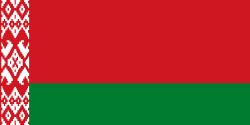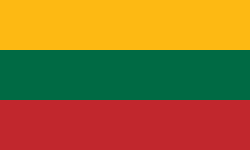ATP Shenzhen Open 2015 – mužská čtyřhra
| ATP Shenzhen Open 2015 | ||||
|---|---|---|---|---|
| Vítězové | ||||
| Finalisté | ||||
| Výsledek | 6–1, 6–7(3–7), [10–6] | |||
| Soutěže | ||||
| mužská dvouhra • mužská čtyřhra | ||||
| ||||
Do soutěže mužské čtyřhry na tenisovém turnaji ATP Shenzhen Open 2015 nastoupilo šestnáct dvojic. Obhájcem titulu byl nizozemsko-rumunský pár Jean-Julien Rojer a Horia Tecău, jehož členové do turnaje nezasáhli.
Vítězem čtyřhry se stal nenasazený pár složený z Izraelce Jonatana Erlicha a Brita Colina Fleminga, když ve finále zdolal australsko-brazilské turnajové dvojky Chrise Guccioneho a Andrého Sá výsledkem 6–1 a 6–7, až v superitebreaku poměrem míčů [10–6]. Oba šampioni tak získali premiérový společný titul z deblu, jenž pro Erlicha představoval osmnácté turnajové vítězství ze čtyřhry na okruhu ATP Tour a pro Fleminga osmou takovou deblovou trofej.
Vítězové si do žebříčku ATP připsali 250 bodů.
Nasazení párů
 Dominic Inglot /
Dominic Inglot /  Robert Lindstedt (semifinále)
Robert Lindstedt (semifinále) Łukasz Kubot /
Łukasz Kubot /  Ajsám Kúreší (1. kolo)
Ajsám Kúreší (1. kolo) Chris Guccione /
Chris Guccione /  André Sá (finále)
André Sá (finále) Julian Knowle /
Julian Knowle /  Oliver Marach (čtvrtfinále)
Oliver Marach (čtvrtfinále)
Pavouk
| Legenda | ||
|
|
|
| První kolo | Čtvrtfinále | Semifinále | Finále | ||||||||||||||||||||||
| 1 | | 6 | 6 | ||||||||||||||||||||||
| | 3 | 4 | 1 | | 6 | 6 | |||||||||||||||||||
| | 6 | 6 | | 4 | 3 | ||||||||||||||||||||
| WC | | 4 | 2 | 1 | | 65 | 63 | ||||||||||||||||||
| 3 | | 6 | 7 | 3 | | 77 | 77 | ||||||||||||||||||
| | 1 | 5 | 3 | | 6 | 6 | |||||||||||||||||||
| | 2 | 3 | | 3 | 2 | ||||||||||||||||||||
| | 6 | 6 | 3 | | 1 | 77 | [6] | ||||||||||||||||||
| WC | | 6 | 64 | [12] | | 6 | 63 | [10] | |||||||||||||||||
| | 1 | 77 | [10] | WC | | 6 | 7 | ||||||||||||||||||
| | 4 | 5 | 4 | | 3 | 5 | |||||||||||||||||||
| 4 | | 6 | 7 | WC | | 2 | 4 | ||||||||||||||||||
| | 7 | 6 | | 6 | 6 | ||||||||||||||||||||
| | 5 | 3 | | 6 | 6 | ||||||||||||||||||||
| | 6 | 4 | [10] | | 3 | 3 | |||||||||||||||||||
| 2 | | 3 | 6 | [8] | |||||||||||||||||||||
Odkazy
Reference
V tomto článku byl použit překlad textu z článku 2015 ATP Shenzhen Open – Doubles na anglické Wikipedii.
Externí odkazy
- Mužská čtyřhra ATP Shenzhen Open 2015 [online]. ATP Tour, Inc. [cit. 2015-10-03]. Dostupné online. (anglicky)
Média použitá na této stránce
Flag of Australia, when congruence with this colour chart is required (i.e. when a "less bright" version is needed).
See Flag of Australia.svg for main file information.The flag of the Dominican Republic has a centered white cross that extends to the edges. This emblem is similar to the flag design and shows a bible, a cross of gold and 6 Dominican flags. There are branches of olive and palm around the shield and above on the ribbon is the motto "Dios,Patria!, Libertad" ("God, Country, Freedom") and to amiable freedom. The blue is said to stand for liberty, red for the fire and blood of the independence struggle and the white cross symbolized that God has not forgotten his people. "Republica Dominicana". The Dominican flag was designed by Juan Pablo Duarte, father of the national Independence of Dominican Republic. The first dominican flag was sewn by a young lady named Concepción Bona, who lived across the street of El Baluarte, monument where the patriots gathered to fight for the independence, the night of February 27th, 1844. Concepción Bona was helped by her first cousin María de Jesús Pina.
The flag of the Dominican Republic has a centered white cross that extends to the edges. This emblem is similar to the flag design and shows a bible, a cross of gold and 6 Dominican flags. There are branches of olive and palm around the shield and above on the ribbon is the motto "Dios,Patria!, Libertad" ("God, Country, Freedom") and to amiable freedom. The blue is said to stand for liberty, red for the fire and blood of the independence struggle and the white cross symbolized that God has not forgotten his people. "Republica Dominicana". The Dominican flag was designed by Juan Pablo Duarte, father of the national Independence of Dominican Republic. The first dominican flag was sewn by a young lady named Concepción Bona, who lived across the street of El Baluarte, monument where the patriots gathered to fight for the independence, the night of February 27th, 1844. Concepción Bona was helped by her first cousin María de Jesús Pina.
Chinese Taipei Olympic Flag. According to the official website of Chinese Taipei Olympic Committee, Blue Sky(circle) & White Sun(triangles) above the Olympic rings is neither the National Emblem of the Republic of China, nor the Party Emblem of Kuomintang (KMT), but a design in between, where the triangles do not extend to the edge of the blue circle, as registered at International Olympic Committee in 1981 and digitally rendered in 2013. Besides, the blue outline of the five-petaled plum blossom is broader than the red one. Moreover, the CMYK code of the blue one and the Blue Sky & White Sun is "C100-M100-Y0-K0", and different from the Olympic rings (C100-M25-Y0-K0). Note that it's the only version recognized by IOC.
Vlajka České republiky. Podoba státní vlajky České republiky je definována zákonem České národní rady č. 3/1993 Sb., o státních symbolech České republiky, přijatým 17. prosince 1992 a který nabyl účinnosti 1. ledna 1993, kdy rozdělením České a Slovenské Federativní republiky vznikla samostatná Česká republika. Vlajka je popsána v § 4 takto: „Státní vlajka České republiky se skládá z horního pruhu bílého a dolního pruhu červeného, mezi něž je vsunut žerďový modrý klín do poloviny délky vlajky. Poměr šířky k její délce je 2 : 3.“




















